8 Field Activity Data Types You Need to Collect Now
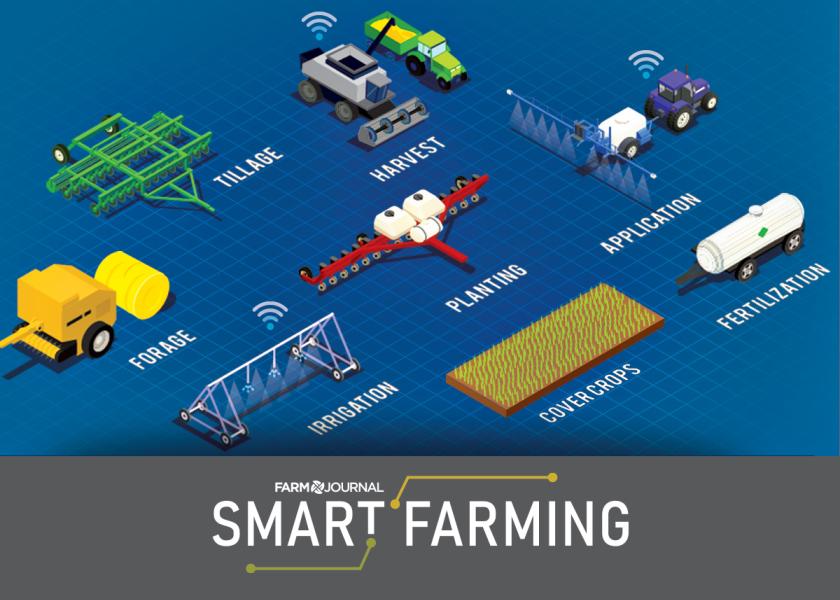
Farm Journal’s Smart Farming Week is an annual week-long emphasis on innovation in agriculture. The goal is to encourage you to explore and prioritize the technology, tools and practices that will help you farm smarter. Innovation today ensures an efficient, productive and sustainable tomorrow.
Data — a word that packs a punch but can be hard to define. Often, we use the word so loosely and generically that we fail to realize what data we need to collect from our fields.
For decades, the majority of the digital data collected at the field level could be divided into three buckets — yield, planting and fertility. These categories came to represent the holy trinity of precision agriculture. Better seed variety selection, side-by-side product comparisons and variable-rate fertility were all made possible because ordinary field activities were now commonly being digitally recorded on a second-by-second basis.
The world has not stood still and is demanding more from those who produce our food, feed and fiber. It is no longer about how much a farmer can produce but rather how the farmer produced the crop.
A more sustainable mindset and menu has made its way from the table to the farm. The masses are demanding more transparency in the production process and are no longer willing to simply trust the farmers’ word. They want the facts and the data to prove it. Whether it is a sustainability initiative from the makers of Wheaties, a growing number of carbon credit programs or the necessary verification to make emerging markets such as sustainable aviation fuel take off, it is going to require more and more field-level data. Truckloads more, in fact.
While three categories of data might have been adequate to implement most precision agronomy tasks, many sustainability programs now require checkboxes in at least eight categories of data at the field level. The first couple on the list above and the following page might look familiar as they have already been mentioned. However, the other six are not the meat and potatoes of data collection most farmers are used to serving up on a regular basis. Some might not have appeared on your radar screen yet.
These eight field activity data types are outlined by many of today’s sustainability and crop traceability programs.
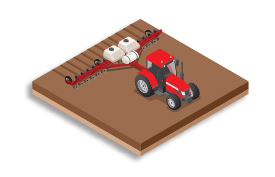 1. Planting
1. Planting
Planting is likely the second most common data set collected on the farm, trailing yield data. It sounds like a pretty simple data set to collect — planting date, crop, variety and population pretty much cover it, right? Not quite. For example, on certain crops you need to note the variety’s relative maturity. Recording soil and field practices at time of planting are also good to note.
In reality, “planting” is one of the most complex data collections because there is usually more going on than just planting. There can be insecticide, fungicide and herbicide applications happening. Then there’s every sort of starter fertilizer combination under the sun. It’s all part of the new normal of data collection.
 2. Harvest
2. Harvest
Over the years, yield data has long been viewed as the alpha dog among the different types of data collected in the field. And as the kingpin of precision agronomy data, it is able to serve as the report card that grades all of an operation’s management decisions made throughout the season. Yield data holds its value when it comes to sustainability
and eco-market programs because yield can be used as a fuel gauge to determine how many nutrients were removed during the season and the ending moisture at harvest. That is vital data when calculating the Btus needed for drying as well as the ultimate environmental impact.
 3. Application
3. Application
Application, and then later recording the application, of crop protection products is just another day at the office for the average farmer. State and federal agencies require records; however, much of this data is still not digitally recorded. That habit will need to quickly change as crop protection products are increasingly seen as having a significant environmental and CO2 impact. Recording the details, regardless of what mix is in the tank, is highly encouraged because those questions appear on almost every sustainability survey. Information such as the date applied, rates, weather and products all need to be part of such data.
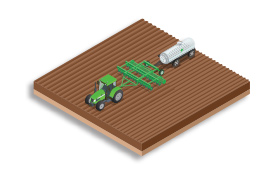 4. Fertilization
4. Fertilization
A large portion of variable-rate applications, especially phosphorus and potassium, are done by retailers. Delivering such data in digital form is not easy, and even today much of it never gets back to the producer. If you’re going to participate in sustainability programs, talk to your retailer to make sure they can deliver the data to you in digital form whether it was flat or variable rate.
Farmers also need to look in the mirror when it comes to digitizing fertilizer applications. Typically, they apply the bulk of the nitrogen, and tracking that product is part of sustainability and carbon programs. Fertilizer is applied multiple times, multiple ways and in multiple forms, making it hard to track digitally. Upgrading your technology to record anhydrous ammonia applications is a great place to start.
 5. Cover Crop
5. Cover Crop
Cover crops, specifically recording the seeding or establishment of cover crops, is critical if you expect to participate in relatively any conservation or sustainability program. Recording planting date and the specifics of the particular cover crop mix is important because cover crops have been labeled as one of the main “practice changes” necessary in order to qualify for many of these programs. Regardless of how cover crops are seeded — by drill, harrow, spinner bed, combine or air — tracking in some digital form is now a good idea. Whether that’s done through an in-cab display or an app on your phone, this data layer is rapidly growing in importance.
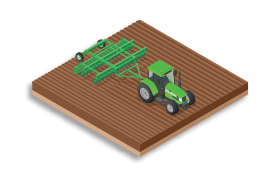 6. Tillage
6. Tillage
Tillage is often the sleeper data most farmers haven’t thought about trying to record digitally. That is partly because most tillage is done with “dumb” implements. There are no sensors automatically telling the user what’s actually going on behind the tractor. Only now are some “smart” implements starting to make their way to the field. Whether this type of data is collected via a phone app, an in-cab display or a CAN bus device connected to the tractor’s nervous system, having good tillage records can put you at the front of the sustainability class. Specific tillage points to record are date, implement type, tillage depth and the percent
residue remaining.
 7. Irrigation
7. Irrigation
Irrigation tracking is certainly not anything new for many of the farmers who rely on that source of water. However, now that carbon and water conservation and quality programs are part of the mix, growers need to document even more details about irrigation activity. For each application, growers need to record: how many acre-feet of water was applied the date, the type of irrigation system and the weather conditions.
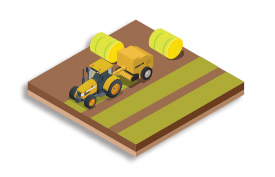 8. Hay and silage
8. Hay and silage
Hay and silage production presents a challenge because, unlike yield monitors on combines, automatically tracking the removal off fields is uncommon. Onboard sensors to measure field production data are becoming more commonplace on large balers and silage choppers but are far from the mainstream. Knowing the tonnage removed from each acre gets us closer to how we’ve leveraged combine yield data to manage acre-by-acre rather than the field as a whole. Such data leverages crop removal and variable-rate technologies, all checklist items for many sustainability programs.
Transforming a farm to digitally record all eight categories of field-level data cannot and will not happen overnight. The immediate step, however, is to assess the gaps that exist on your farm so you have a more complete checklist in hand. Every category is important, but shore up your digital data for application, fertilization and tillage work immediately. Many of the sustainability and carbon programs require two to three years worth of historical field data, so delaying action will only delay future opportunities.
Remember the rule is simple: If you are in the field doing something, be sure to leave the field with a digital record of what you did. Keep it in your possession because you’re going to end up using it a lot more than you ever imagined.
Have you read these Smart Farming stories?
6 Tech Tools and Trends To Watch In 2024
Three Years to Vertical: How to Convert to Vertical Tillage, and Why You Should







